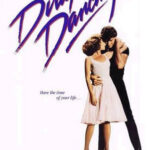The 1990s: a decade that witnessed electronic music truly come of age. It transcended subcultures, becoming a dominant mainstream force by the decade’s end. This era fundamentally reshaped music, leaving an indelible mark that resonates even today. It was a transformative period, arguably the last time music experienced such a profound shift before the digital revolution fully took hold.
The 90s were a breeding ground where underground sounds blossomed into tomorrow’s mainstream hits. It seemed to be the last instance of the recurring cycle where underground movements periodically surge into popular culture. Then, the internet arrived, birthing the ultimate pop culture machine. This new global network rapidly absorbed emerging trends, leading to an explosion of diversification and countless microgenres. Keeping track of it all, even with dedicated effort, became an impossible task. This period also marked the beginning of the decline of record stores, foreshadowing the changes the new millennium would bring. The close of the 90s, symbolized by New Year’s Eve 2000, saw many celebrating at massive open-air festivals, perhaps a peak moment before a new era dawned.
For those who spent their twenties in the 90s, like myself, it was a formative time. Emerging from underground open-air festivals, there was a sense of rebellion against established industry norms. The desire to create authentic, underground techno became paramount, even if it meant producing vinyl records with limited runs. Staying beneath the mainstream radar became a conscious choice, a path many continued to follow.
The 90s were about more than just music; they were about collective experience. Gathering and dancing together, whether under the open sky or in dimly lit venues, for nights on end, was a powerful statement. These parties were more than just entertainment; they were a form of cultural expression and connection.
The 90s held a unique energy, a sense of freedom and discovery that is often nostalgically remembered.

